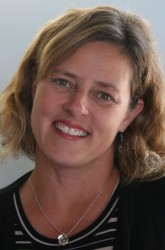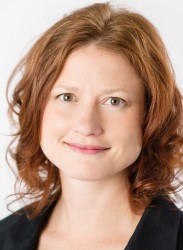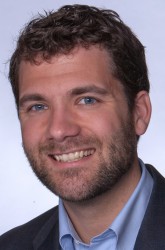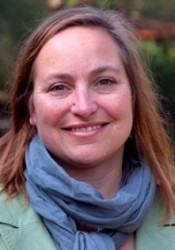New Leaders Could Impact Neighborhoods
Interviews with four new executive directors of community groups.
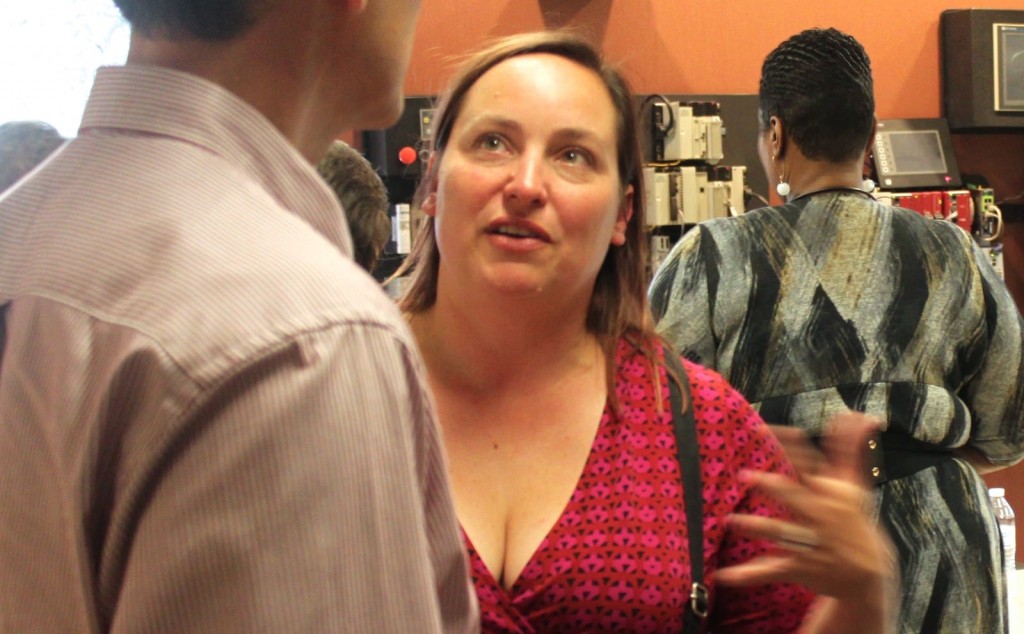
Corey Zetts, newly appointed executive director of Menomonee Valley Partners, discusses neighborhood issues at a recent input session. Photo by Matthew Wisla.
In recent months, several prominent community-focused organizations have undergone leadership transitions. A change at the top creates the opportunity for new leaders to assess the organization’s direction, as well as the programs and initiatives affecting residents of the neighborhoods they serve.
The Milwaukee Neighborhood News Service surveyed four recently appointed executive directors: Laura Bray, LISC Milwaukee; Kristi Luzar, Urban Economic Development Association of Wisconsin (UEDA); Will Sebern, Layton Boulevard West Neighbors; and Corey Zetts, Menomonee Valley Partners. Edited versions of their comments and responses are below.
Asked about the challenges facing their organizations, two leaders mentioned migrating to new business models — Menomonee Valley Partners is focusing more on workforce development issues than in the past, and UEDA is emphasizing service contracts versus grant funding. Each new executive director discussed the importance of partnerships.
-
Laura Bray: “At the end of the day, not any one institution is going to be able to solve all the problems – it has to be working together in partnership….It really does require so many stakeholders at the table working together.”
- Kristi Luzar: “The push toward collective impact models has changed the way that nonprofit organizations operate. Outcome-based evaluation at a service level is still important, but you also have to demonstrate that you are collaborating with others under a common agenda.” She added, “We want our members and partners to be better at what they do, and to also be better together.”
- Will Sebern: “(One key) is listening to neighbors, business owners and stakeholders to identify ever-changing community priorities and then cultivating the partnerships and resources to make that vision a reality.” Examples include, “Partner with neighbors to connect them with resources to make improvements to our historic housing stock, form block clubs that promote community safety and social engagement, and celebrate neighborhood pride.”
- Corey Zetts: “We have learned again and again through the projects we engage in that the sum is greater than the parts and we need everyone around the table. The diversity of people, organizations and perspectives makes for a more holistic vision, more creative, comprehensive efforts and sustainable results in the long-term.”
What is one thing you’d like to see local elected officials do to help residents in central city neighborhoods?
- Kristi Luzar: “Become more engaged with intermediaries like UEDA, the Nonprofit Center of Milwaukee, LISC Milwaukee, United Neighborhood Centers of Milwaukee, chambers of commerce and others….And specifically, more interest in working together as a group or coalition to advocate for policy changes and increased investment in regional transportation and employment issues.”
- Corey Zetts: “Transportation, education, workforce readiness, public health, etc. – all of these are interwoven, and we need people to bring diverse ideas, expertise and skills together to address them. There is incredible work going on throughout our communities now … and I would love to see those efforts fully supported and given capacity and resources to reach their potential.”
We are coming to the end of a very violent summer in Milwaukee. What can organizations like yours do to help address the situation?
-
Kristi Luzar: “So many people we work with state that the best solution to crime is a job. And the significant disparities for boys and men of color in Wisconsin when it comes to employment and education opportunities have been well documented. Based on feedback from members and partners, UEDA’s 2015 Community Development Summit (in October) will focus on how changing workforce trends can be leveraged to improve employment outcomes for boys and men of color.”
- Will Sebern: “(We work) with neighbors at the block level to connect them with one another and with tools and resources that assist them in promoting community safety….When we first organize a meeting on the block, neighbors often comment how it is the first time they have met their neighbors. A key first step in our block club development is simply allowing for neighbors to get to know one another.”
- Corey Zetts: “We bring high school youth to Menomonee Valley employers to tour facilities (to) see how things are made in Milwaukee and learn about the career paths to different job opportunities. Creating community space and showing career pathways is a small piece of this very complicated puzzle, but everyone contributing their piece adds up.”
Regardless of whether they were promoted from within, or if they were stepping into a new organization, each of the new executive directors prioritizes listening to the community.
-
Laura Bray: “I’m doing a lot of listening and figuring out where we might be supportive.” To do that Bray says she first must ask the right questions, “I’m dedicated to raising questions so I know how people feel about the future of the city and their own lives.”
- Will Sebern: “The School Sisters of St. Francis, who founded LBWN in 1995, have always reminded us of the importance of ‘ever creating new ways to respond.’ This highlights the ongoing importance of staying in touch with the hopes, needs and aspirations of the neighborhood and being creative in how (we) make this shared vision a reality.”
- Corey Zetts: “I see my role as convener and facilitator, creating the space for diverse perspectives to work together on interconnected issues to reach better solutions. (Our) board, staff, committee members and partners throughout the community include thoughtful, visionary and diligent people — the role at Menomonee Valley Partners is really bringing the right people to the table at the right time.”
This story was originally published by Milwaukee Neighborhood News Service, where you can find other stories reporting on fifteen city neighborhoods in Milwaukee.


